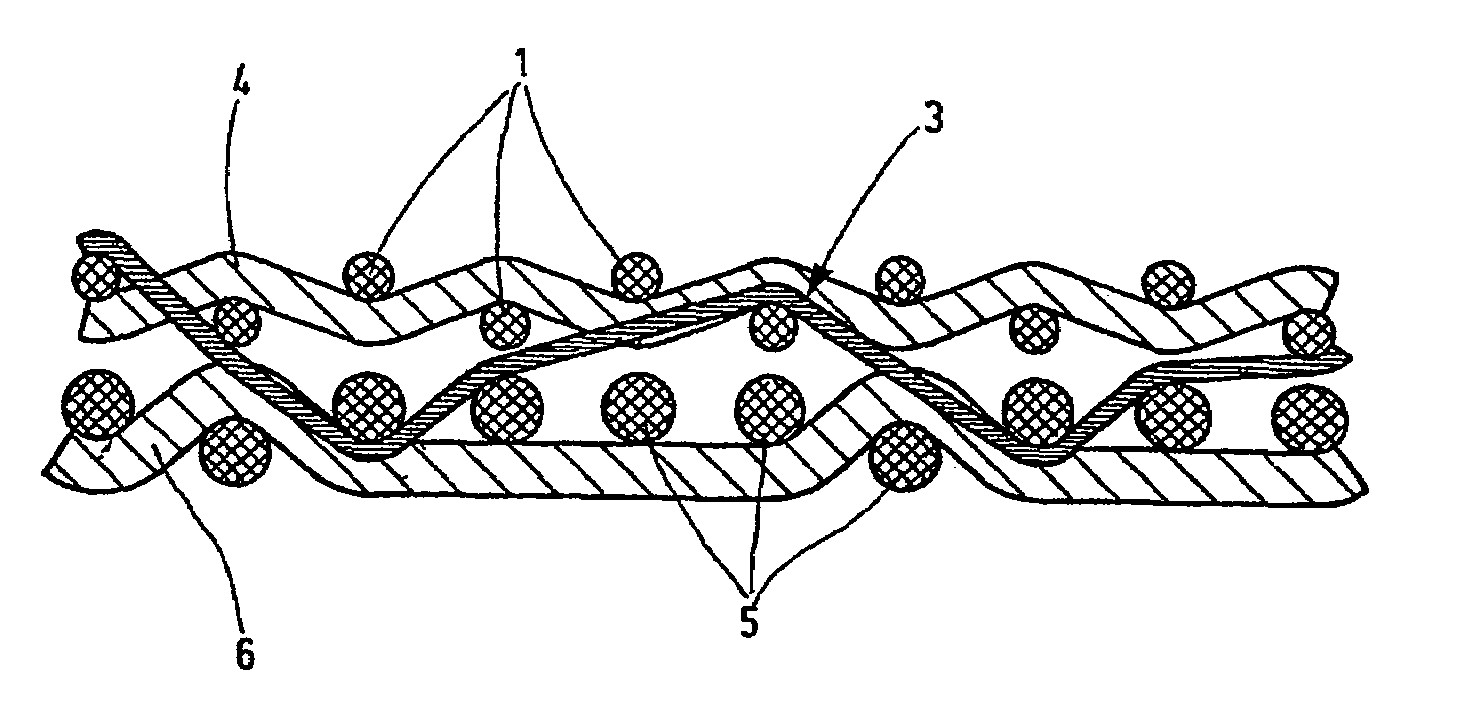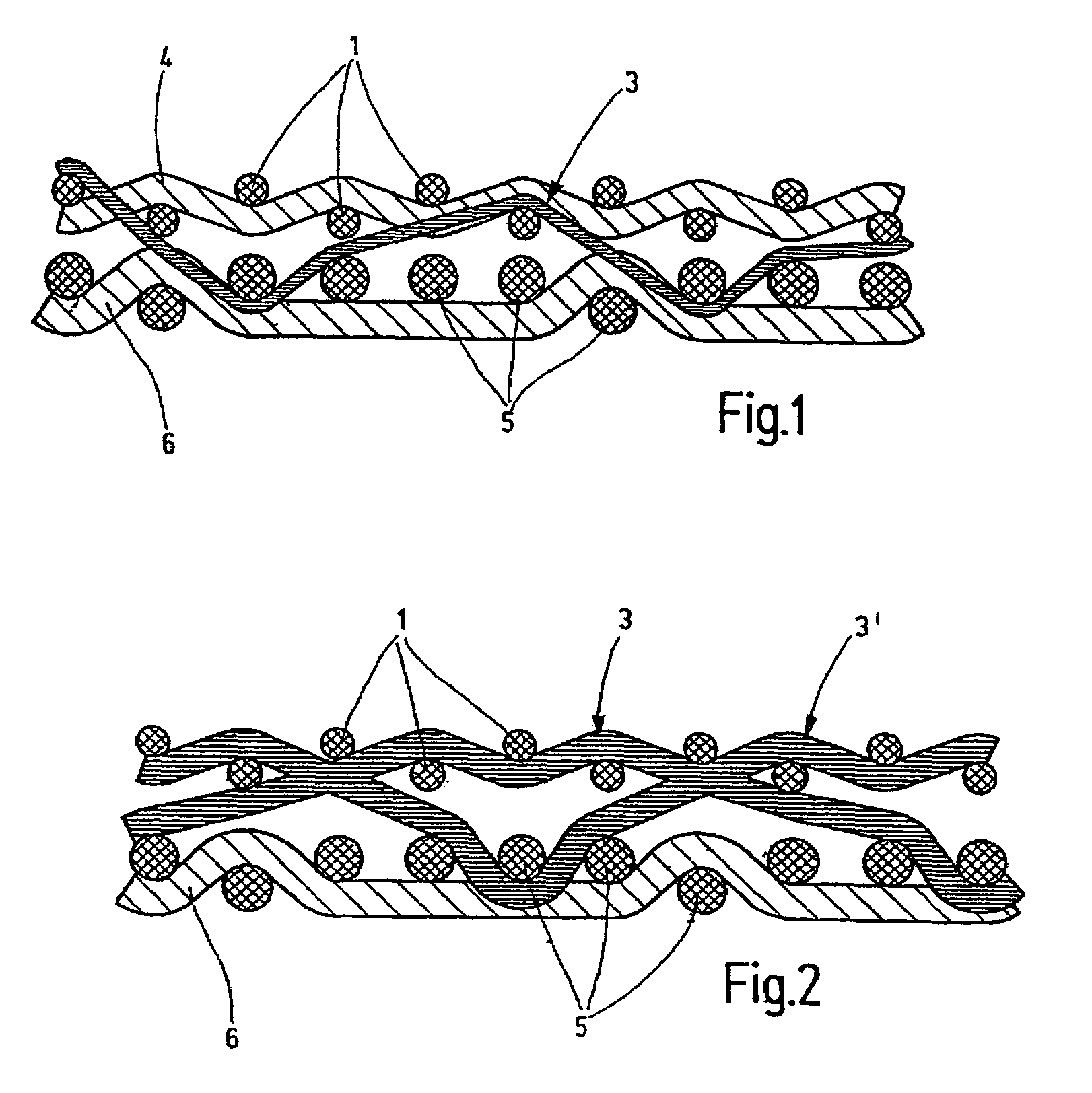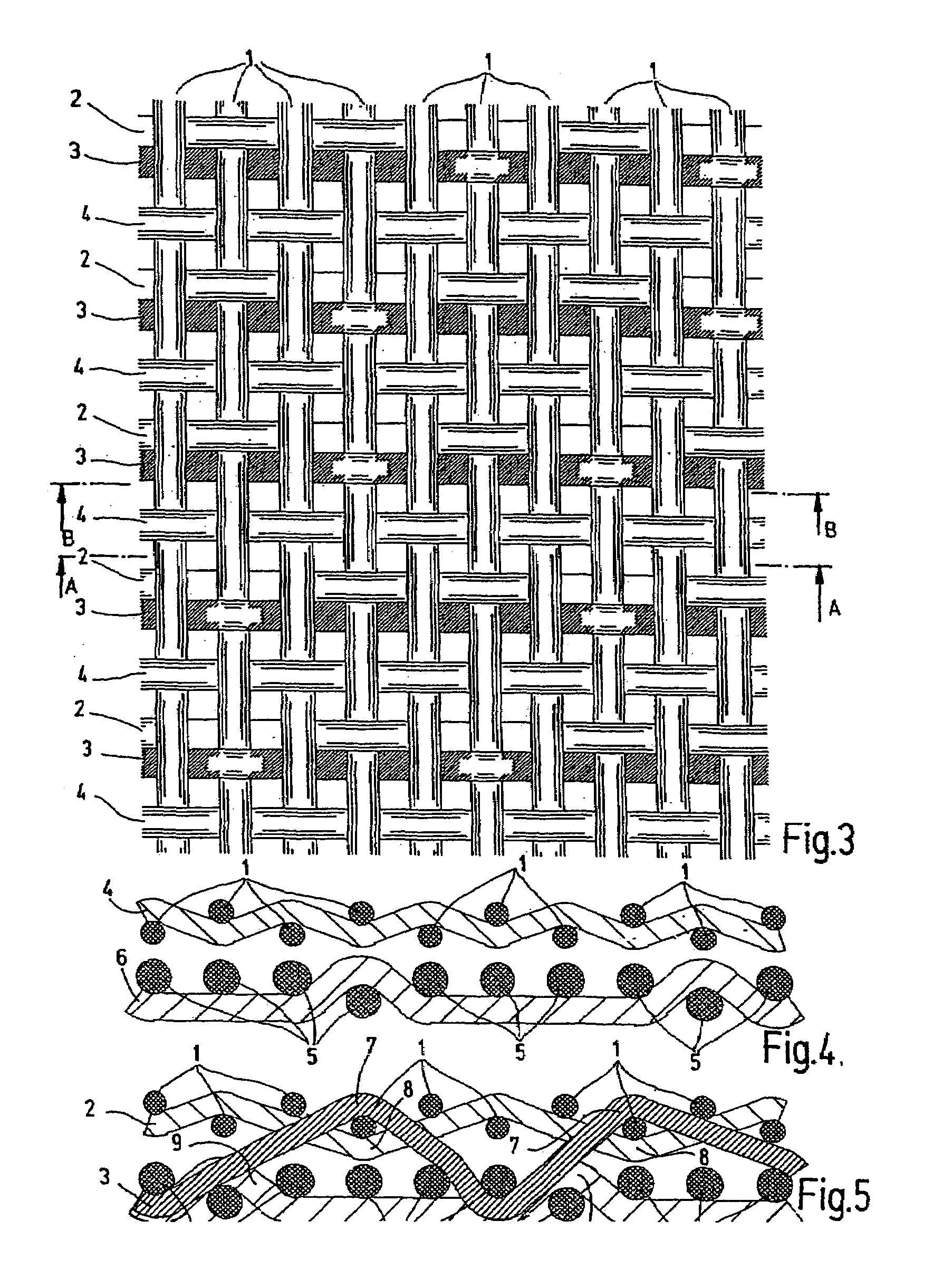Papermaking screen
a papermaking screen and fabric technology, applied in the field of papermaking screens, can solve the problems of undesirable marks in paper, unsuitable known approaches, and rapid change of longitudinal deflection of the fabric of the screen, and achieve the effects of high stiffness values, high cross-directional stability, and preventing paper marks
- Summary
- Abstract
- Description
- Claims
- Application Information
AI Technical Summary
Benefits of technology
Problems solved by technology
Method used
Image
Examples
Embodiment Construction
[0024]The following numeral identifications are employed in all the illustrations:[0025]1 upper warp[0026]2 upper weft (with binding weft)[0027]3′3 binding weft[0028]4 upper weft[0029]5 lower warp[0030]6 lower weft[0031]7 extension above[0032]8 extension below[0033]9 extension above through lower weft 6
[0034]In FIG. 1, the conventional papermaking screen, as viewed in FIG. 1, has two individual fabrics, the upper individual fabric or upper fabric forming the paper side and the individual fabric positioned below it representing the bottom side or lower fabric. The upper individual fabric is formed of a set of weft yarns 2 as upper weft yarns and warp yarns 1 as upper warp yarns. The machine side located underneath also has a set of weft yarns 6 as lower weft yarns and warp yarns 5 as lower warp yarns. The disclosed screen has a linen bond as the binding type for the paper side. The lower fabric is configured as a five-shank fabric with respect to a repeat. As FIG. 1 shows, the two in...
PUM
| Property | Measurement | Unit |
|---|---|---|
| speeds | aaaaa | aaaaa |
| diameters | aaaaa | aaaaa |
| cross-directional stability | aaaaa | aaaaa |
Abstract
Description
Claims
Application Information
 Login to View More
Login to View More - R&D
- Intellectual Property
- Life Sciences
- Materials
- Tech Scout
- Unparalleled Data Quality
- Higher Quality Content
- 60% Fewer Hallucinations
Browse by: Latest US Patents, China's latest patents, Technical Efficacy Thesaurus, Application Domain, Technology Topic, Popular Technical Reports.
© 2025 PatSnap. All rights reserved.Legal|Privacy policy|Modern Slavery Act Transparency Statement|Sitemap|About US| Contact US: help@patsnap.com



